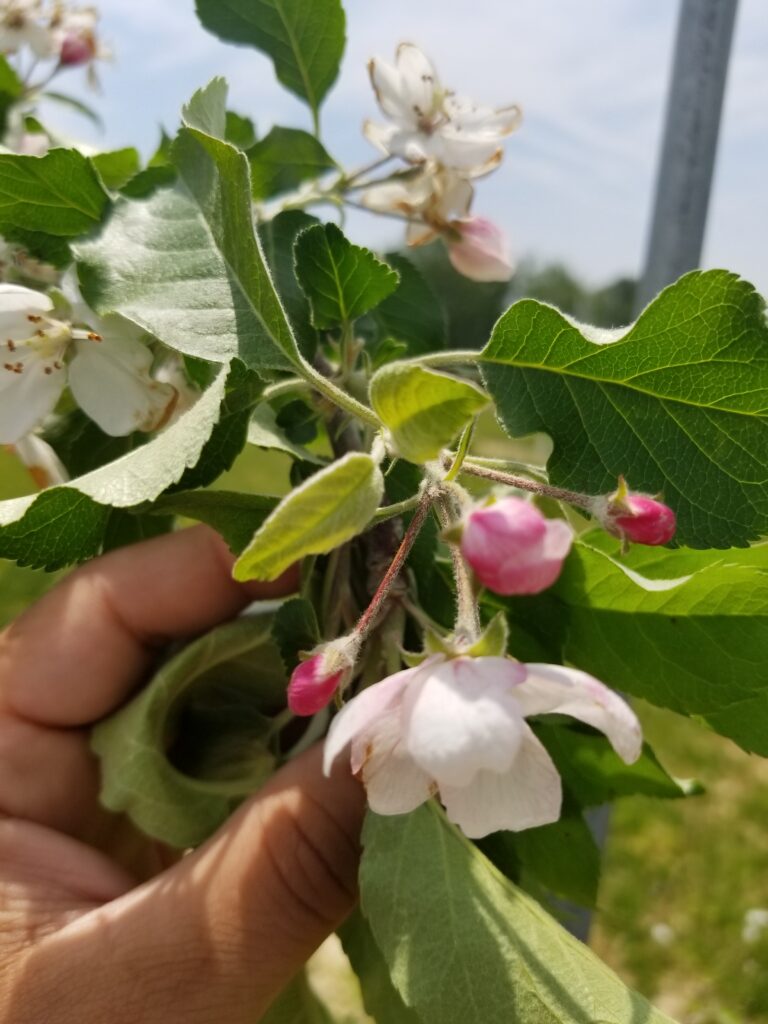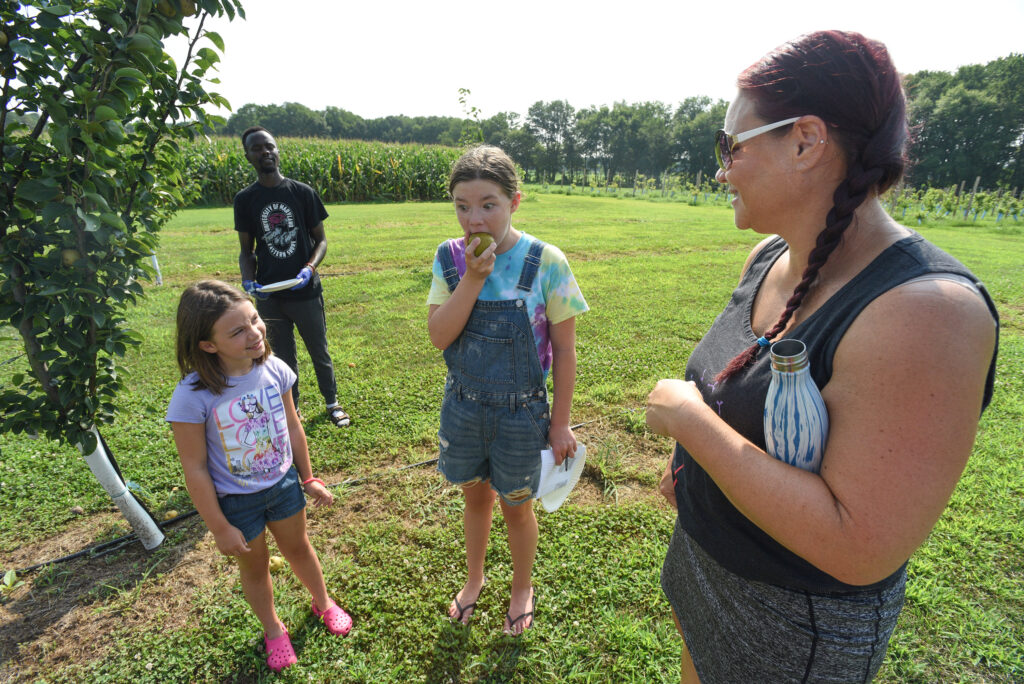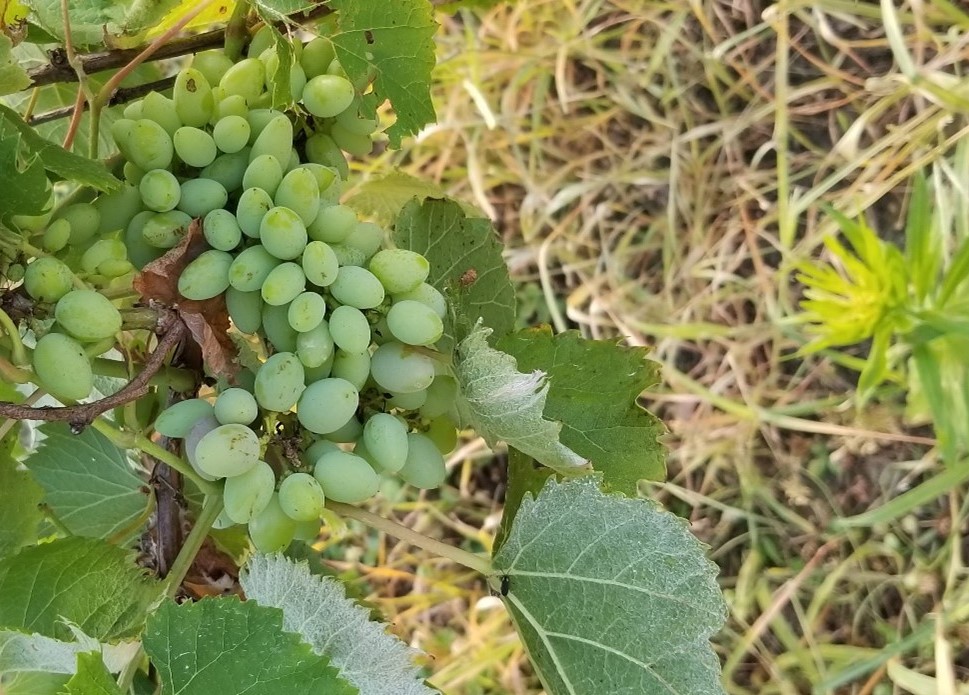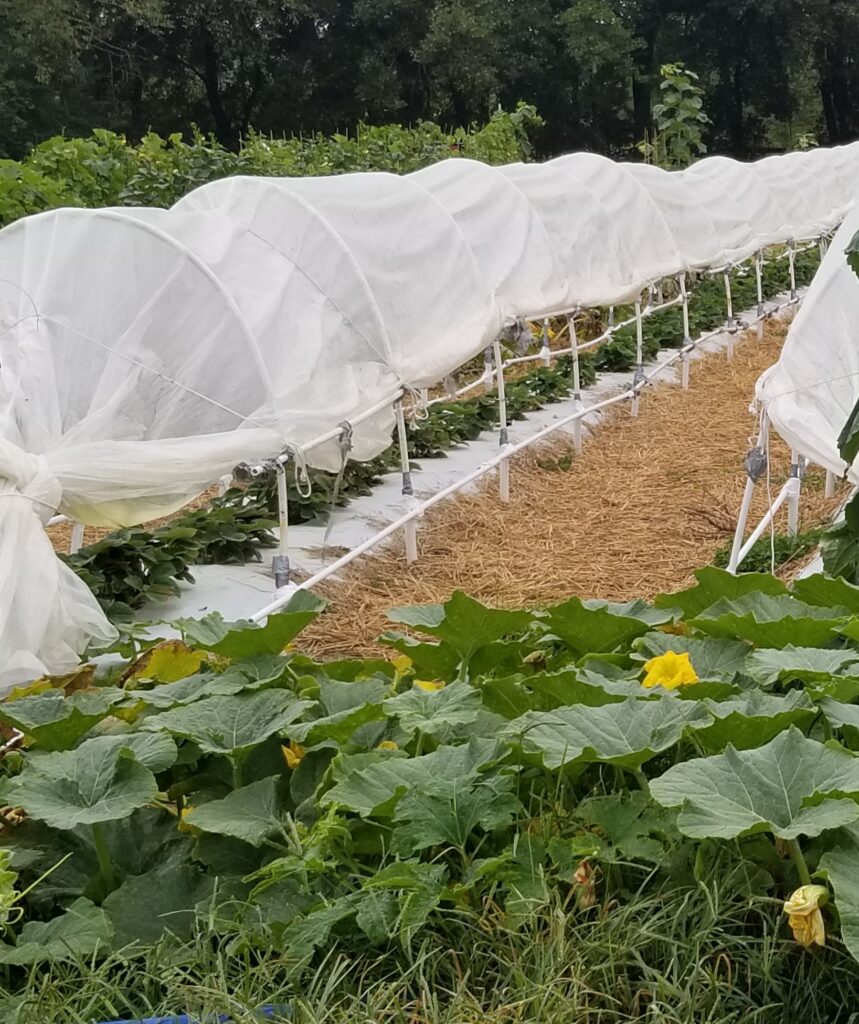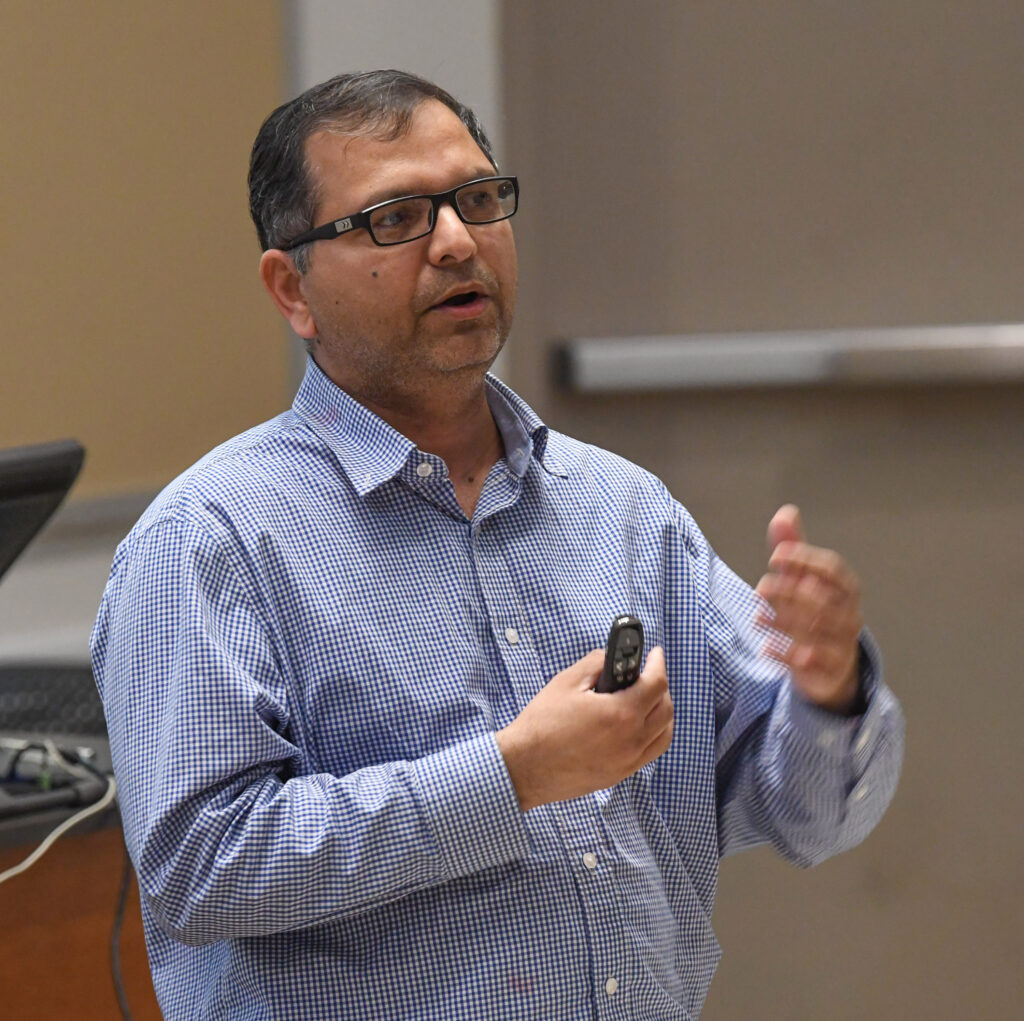
The March installment of the SANS Seminar Series was UMES’ Naveen Kumar Dixit, an associate professor of horticulture and extension specialist. Dixit spoke about UMES horticulture advancements, including his program’s teaching, research and extension efforts.
Dixit’s work focuses on crop growth and development issues, including stress and post-harvest physiology.
He opened the session with statistics on what the strawberry industry on the Delmarva Peninsula was a century ago compared to today. According to The Chicago Packer, Marion Station in Somerset County shipped 200 rail cars of berries in 1920 to metropolitan areas and was considered “the strawberry capital of the world.” A 1925 U.S. Department of Agriculture National Agricultural Statistics Service Census of Agriculture reported that 7,000 acres in Maryland were in strawberry cultivation. In 2022, it was reduced to 150 acres. Dixit aims to revive the industry and is looking to extend the season through the cultivation of day-neutral strawberries, along with raspberries, in low and high tunnels.
A lot has been learned since their work began in 2018, Dixit said. He and student researchers found that with relatively inexpensive materials (PVC pipe, twine, plastic) yield can be increased by 34.6% by growing in a low tunnel. A low tunnel with 180 plants in raised beds produced $720 in revenue per $57.68 in cost per season. Research was done on four varieties of day-neutral strawberries (Redstart, Albion, Mara Des Bois and Portola), with Portola outperforming. Leaf spot, a serious disease if left unchecked, was found less using low tunnels.
Research was also done in high tunnels to determine which variety performed favorably in those conditions, with Seascape and Portola rating high for Delmarva. The growing season was extended to the second week of November, with the color and size of the fruit up to commercial standards. Adding biochar from biosolid to the soil was also studied, which showed good water retention and root microbes. Findings were shared through extension outreach with local farmers through workshops and youth via UMES Extension 4-H STEM. (Read more in Delmarva Farmer.)
UMES Orchard
Along with berries, Dixit is involved in grapevine and fruit tree cultivation research. His goal is to bring fruit production back to Somerset, Wicomico and Worcester counties, where 6 million pounds of apples were harvested a century ago.
An orchard was planted in 2017 on the UMES campus with 30 apple scions. Dixit has also been instrumental in establishing community mini-orchards in Fruitland, Eden and Princess Anne as part of a Robert Wood Johnson Foundation project led by Dr. Virginie Zoumenou, director of extension nutrition and health programs at UMES.
“With fruit trees, the rootstock and scion are very important,” said Dixit, who demonstrates grafting techniques at in-person and online workshops. The horticulturist works with a group of 25 local farmers as part of a Maryland SARE Apple Team and a smaller Virginia group. The SARE apple groups are part of a three-year program “to learn together” how to mitigate disease such as fire blight, weather and pests.
Dixit also created an online coalition of farmers for research and outreach. Apples, he said, are a potentially good choice for fruit growers since varieties can be selected depending on when the grower wants to harvest them.
“It keeps the harvest going.”
A vineyard with 40 different varieties of wine and table grapes was added in 2019. Grape production in Maryland is becoming increasingly important to meet demand, Dixit said. A Maryland law went into effect in 2023 that mandates all Class 4 wineries must own, or have under their control, 20 acres of grapes or other fruit or ensure that at least 51% of the ingredients used in the annual production of their wines were grown in the state.
Dixit’s interests have also delved into Asian fruit (pears) and ethnic vegetables such as bitter gourd/melon, bottle gourds and fenugreek/methi. With rising Asian populations in nearby metropolitan areas, area farmers can diversify to meet demand for ethnic vegetables. Shelf life can be increased by two weeks, Dixit said, if produce is sourced locally. Fenugreek is a potentially good crop for farmers as an alternative crop, as it can be harvested three times per year.
Pomegranate is another crop that could have potential for Maryland small farmers, Dixit said. He planted 15 varieties this past June in the UMES orchard. Most U.S. production comes from California where some 497 farms are growing the fruit on less than an acre. Once planted, trees have a potential lifespan of 200 years.
Beyond Fruit
In addition to fruit cultivation activities, Dixit is also involved in nanotechnology in horticulture in the form of nanopesticides and nanofertilizers. He also researches climate change related to salt water tolerant crops, including soybean. (See Delmarva Farmer for more.)
As the Maryland coordinator for Northeast Sustainable Agriculture and Research, Dixit is impacting the region’s farmers. Among other duties, he holds online SARE grant writing workshops. Last year, he was instrumental in one of the farmers he works with receiving a SARE grant for $30,000 to grow strawberries. Another was funded under the 2024 Farmer Grant Program for a project using a high tunnel to increase fig tree yield in Maryland and for conserving local fig germplasm.
Gail Stephens, agricultural communications, University of Maryland Eastern Shore, School of Agricultural and Natural Sciences, UMES Extension, 410-621-3850, gcstephens@umes.edu.
Photos by Todd Dudek, agricultural communications, University of Maryland Eastern Shore, School of Agricultural and Natural Sciences, UMES Extension, tdudek@umes.edu


